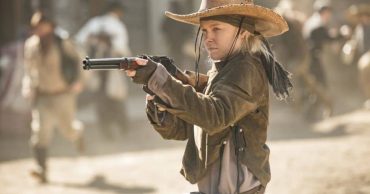The Annies have nothing to do with the theater or the musical “Annie” but is the truncated version of “animation.” Given the popularity of animated movies, it only makes sense to have an award ceremony for those who put together some of our most memorable movie and television scenes as viewers.
There are two broad categories of Annies — Production and Achievement. The list of Achievement categories is too long to list here, but here are the Production categories.
- Best Animated Feature
- Best Animated Feature-Independent
- Best Animated Special Production
- Best Animated Short Subject
- Best Animated Television/Broadcast Commercial
- Best Animated Television/Broadcast Production For Preschool Children
- Best Animated Television/Broadcast Production For Children
- Best General Audience Animated Television/Broadcast Production
- Best Student Film
June Foray, which is not the most common household name, was the one who got the Annie awards organized some 45 years ago. She believed people like Max Fleischer who had created Betty Boop, Popeye, and Olive Oyl, among others, should be professionally recognized. The Annies fall under the broader organization, the International Animated Film Association or ASIFA. (It’s a French acronym, sort of.)
One of the things we take for granted with the Annies or any award ceremony is that there are always people who will come to attend the event. Even though the first Annie awards were given in 1972, June was not certain how many attendees there would be. When you devote a considerable amount of time and energy to something, especially such a public event, you hope that somebody will show up. Another thing that can be easily overlooked is that this first ceremony charged $8.50 for a ticket. (Compare that to the $150 minimum you have to pay for the nosebleed seats at the Oscars.) Of course, the first event turned into a success, with more than 400 people attending.
June recalls that because she knew a number of people in television, the event could be covered and get some needed public exposure. But the next year offered up only one Annie, yet the event continued to be popular in the industry. One of the problems was that awardees were not familiar with the hardware. Walter Lantz, the 1973 recipient, didn’t know the top of the trophy came off — and he dropped it. Fortunately, he dropped it off-stage, so the embarrassment factor was low. It was repaired but it did make the Annie organizers rethink its construction.
What may seem weird is that there was no Annie award for Best Animated Feature until 1992 — 20 years later. Much of the focus had been on honoring the “masters”, those who paved the way for future animators to succeed. What followed were a number of categories recognizing the broader scope of animation talent, including motion pictures, television, directing, storyboarding, voiceovers, animated character design, and best music in an animated feature.
Given the continued popularity of animated films and features both on television and the silver screen, there should be a greater public following of the Annie winners. (Can you name at least one from last year?) But more than the popularity of animation, the award ceremony gives credit to those people who work behind the scenes, something that most of the other entertainment awards shows fail to do. The Annies focus on the result of a collaborative effort rather than a specific person.
 Follow Us
Follow Us




